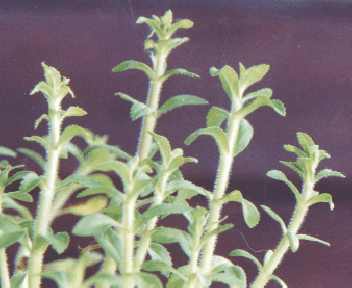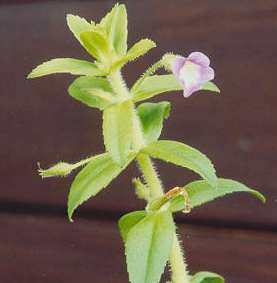
|
| Rice paddy herb, flowering plant |
The intense, almost sparkling lemon odour of this plant harmonizes almost perfectly with fresh water fish. In the South of Vietnam, it is mandatory for spicy (sweet–sour–hot) fish soups (canh chua [canh chua]); the herb is not cooked, but served raw and coarsely chopped as part of the herb garnish that makes any South Vietnamese food really South Vietnamese. Canh chua is basically a milder version of the fiery Thai soup, tom yam (which, however, is more often prepared not with fish but with shrimps, see kaffir lime), but it acquires a unique character by the addition of fresh pineapple. In Cambodia, an almost identical soup is called Samlor Machu Trey [សម្លម្ជូរត្រី]. The spicy and fruity character of that soup is perfectly complemented by rice paddy herb.
Rich soups of that kind are commonly eaten as a full meal in South East Asia. In Vietnam, they are typically served not with rice but with fresh French white bread (baguette); often, a large pot of soup pot is placed in the center of the table and each diner dips the bread into the soup, similar to Swiss fondue.
The flavour of rice paddy herb goes particularly well with mild Vietnamese curries, e. g., chicken curry (ca ri ga [ca ri gà]). As their Thai counterparts, Vietnamese curries are based on coconut milk, but they are only lightly flavoured with a dash of chile, lemon grass and, as a French heritage, curry powder (see curry leaves). The intensive red–orange colour often comes from annatto oil. If rice paddy herb is not available, lemon- or anise-flavoured basil or simply coriander leaves make good alternatives.
Unfortunately, most Vietnamese cookbooks will omit this plant since it is not
easily available outside of South East Asia. Most cookbooks silently supplant
any reference to rice paddy herb by suggestions of other herbs popular in the
region (basil, mint
Vietnamese coriander and regular
coriander).






